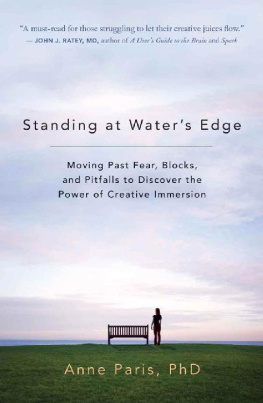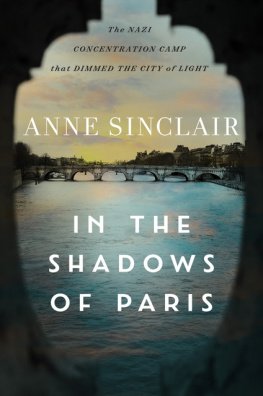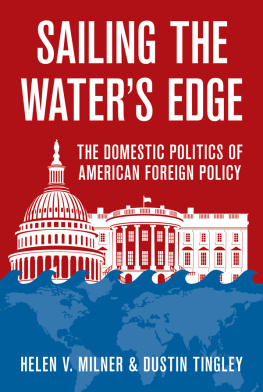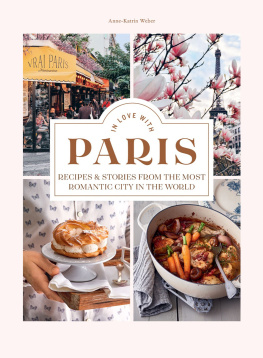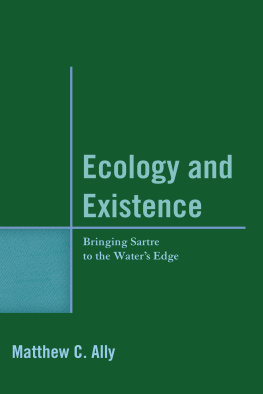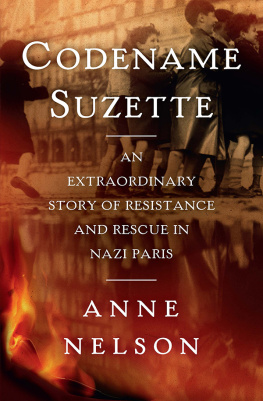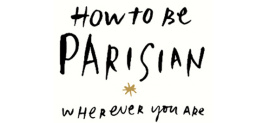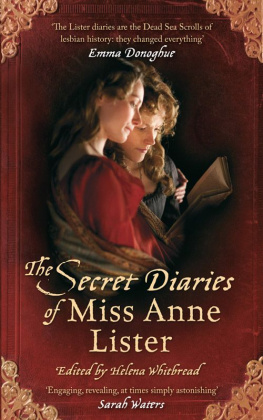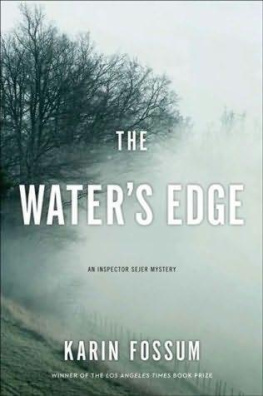The perfect book if youre experiencing a dry spell in your creativity a step-by-step path to inspiration.
Armando Gallo, photographer and member of the
Hollywood Foreign Press Association board of directors
This book combines insights gained from contemporary psychoanalytic theory and practical, hands-on recommendations for encouraging creativity. Reading this book will reward not only artists but also all those who desire to express themselves in new ways but do not know how or where to begin. As a psychoanalyst deeply involved in the study of creativity, I consider this book as serving an important function in tapping a variety of creative resources.
Anna Ornstein, MD, professor emerita in child psychiatry
at the University of Cincinnati and
lecturer in psychiatry at Harvard Medical School
Dr. Pariss book could not have arrived at a better moment: I was cut off from my creativity, sad over lost love, and afraid Id never feel that rush of immersion again. Her stories and suggestions helped me move forward, but heres why you must buy this book: Dr. Paris brilliantly explores how our fears and blocks prevent us from entering the creative immersion we all crave.
Jennifer Louden, author of The Womans Comfort Book
and The Life Organizer
Moving Past Fear, Blocks,
and Pitfalls to Discover the
Power of Creative Immersion
Anne Paris, PhD
New World Library
Novato, California
Copyright 2008 by Anne Paris
All rights reserved. This book may not be reproduced in whole or in part, stored in a retrieval system, or transmitted in any form or by any means electronic, mechanical, or other without written permission from the publisher, except by a reviewer, who may quote brief passages in a review.
The material in this book is intended for education. It is not meant to take the place of diagnosis and treatment by a qualified medical practitioner or therapist. No expressed or implied guarantee as to the effects of the use of the recommendations can be given nor liability taken.
Text design by Tona Pearce Myers
Library of Congress Cataloging-in-Publication Data
Paris, Anne, 1962
Standing at waters edge : moving past fears, blocks, and pitfalls to discover the power of creative immersion / Anne Paris.
p. cm.
Includes bibliographical references and index.
ISBN 978-1-57731-589-6 (pbk.: alk. paper)
1. Creative abilityPsychological aspects. 2. Inspiration. 3. Creation (Literary, artistic, etc.) I. Title.
BF410.P372008
153.3'5dc22;
2008003402
First printing, May 2008
ISBN:98-i-5773i-589-6
Printed in the United States on 50% postconsumer-waste recycled paper

New World Library is a proud member of the Green Press Initiative.
10 9 8 7 6 5 4 3 2 1
FOR MIKE
H ow do we take the plunge into creativity? If you are an artist, a writer, or a person who works in any other creative capacity, this book is for you. It draws on my twenty years of experience as a clinical psychologist in understanding and helping all types of artists along in their creative processes. Through thousands of hours of psychotherapy sessions with artists, I have learned to respect artistic creation as one of the most challenging of all human activities. As I accompanied these artists, writers, actors, dancers, designers, and musicians on their artistic journeys, I witnessed their inner struggles as they wrestled with beginning and sustaining the creative process. I have seen artists who had become depressed or had developed addictions. The process of creativity was obviously an intense psychological challenge, one that promised ultimate gratification but also carried the risk of pain and darkness.
Creating a piece of art is one form of immersive experience. But so are our relationships with others. For example, allowing myself to trust someone else, being able to enter into my sons view of the world, and being able to play with my friends all call for a capacity to both invest myself and suspend myself. These immersive moments are what define me and give meaning and strength to my existence. And yet the anticipation of immersing myself is, at times, very frightening and calls up my strongest psychological defenses.
Adding insights from my own struggles to immerse to those I have observed in artist clients, I hope to present a framework of understanding that will help others. As a psychologist, I have understood that many problems arise from the inability to fully immerse oneself, whether that is in the formation of something new (like art or scholarly work) or in the creation of a loving and intimate connection with another person. Through my personal and professional experiences, I began to appreciate the process of creativity involved in everyday life and to see similarities in the blocks encountered. My theoretical framework is based in contemporary psychoanalytic ideas and research. Rather than aiming to offer quick fixes for blocks to immersion, my goal is to provide the reader with a deep appreciation and respect for immersive efforts. This book will be about the depth of the fears that paralyze us and about how to elicit the kinds of psychological support we need to boost our courage and capacity to take the plunge into creativity and hope.
Although my main focus is on the experience of artistic creation, the ideas presented here extend to all kinds of creative activity. Therefore, if you are seeking to increase your creativity in business, academics, or other areas, this book can help you as well.
By focusing on the internal experience of artists as they enter into and sustain creativity, I will reveal the hidden but powerful influence of their sense of connection with others on their creative capacities. This book explores how the capacity to immerse into creativity is a deeply rooted psychological journey that engages our most fundamental hopes and fears. You will likely find yourself in these pages, and I hope that you emerge feeling more special, safe, and understood. Through this appreciation, you will gain new self-awareness that will propel you beyond artistic blocks you encounter along the way. Artists need to understand how creativity confronts them with their deepest fears; how blocks and fears can lead to psychological problems such as depression and addiction, and how to avoid these pitfalls; and how relationships with others are crucial in the creative process. This book will describe what kinds of relationships support creativity, how childhood experience plays an important role in the creative process, and how one can psychologically navigate the creative process from the start to the finish of an artistic project.
I will focus on the part of the creative process that is often the most difficult: entering into a creative state. The capacity to dive into creativity, both in beginning a project and in having to begin again every day as the project continues, will determine our productivity as well as our sense of fulfillment and gratification. Whether you are a professional artist or a hobby artist, you have probably encountered blocks in your process. See if you can relate to the feelings Mary expresses in the following example. Mary squirmed in her chair as she explained,


 New World Library is a proud member of the Green Press Initiative.
New World Library is a proud member of the Green Press Initiative.
